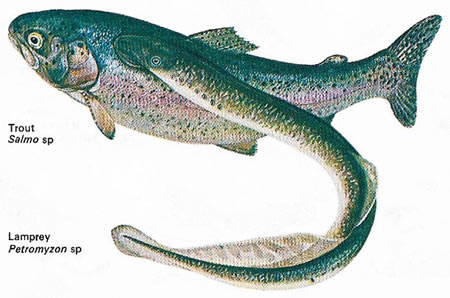
| S.N. | Agnatha | Gnathostomata |
| 1. | Mouth is circular without jaws. | Mouth is provided with jaws. |
| 2. | Paired appendages are lacking. | Paired appendages are present, may be fins or limbs. |
| 3. | Notochord is persistent. | Notochord is usually replaced by a vertebral column. |
| 4. | Vertebral column is not developed or is represented by imperfect neural arches over the notochord. | Vertebral column is fully developed. |
| 5. | There are 8-10 pairs of cranial nerves. | There are 10-12 pairs of cranial nerves. |
| 6. | Only a single median nostril and olfactory sac are present. | Paired nostrils and olfactory sacs are present. |
| 7. | Internal ear has 1-2 semicircular ducts. | Internal ear has 3 semicircular ducts. |
| 8. | Gonad is single and is without a gonoduct. | Gonads are paired and have gonoducts. |
| 9. | There are no organized pancreas and spleen. | Pancreas and spleen occur as distinct organs. |
| 10. | Dorsal and ventral roots of spinal nerves may or my not unite. | Dorsal and ventral roots of spinal nerves always unite. |
| 11. | They are poikilothermic. | They may be poikilothermic or homeothermic. |